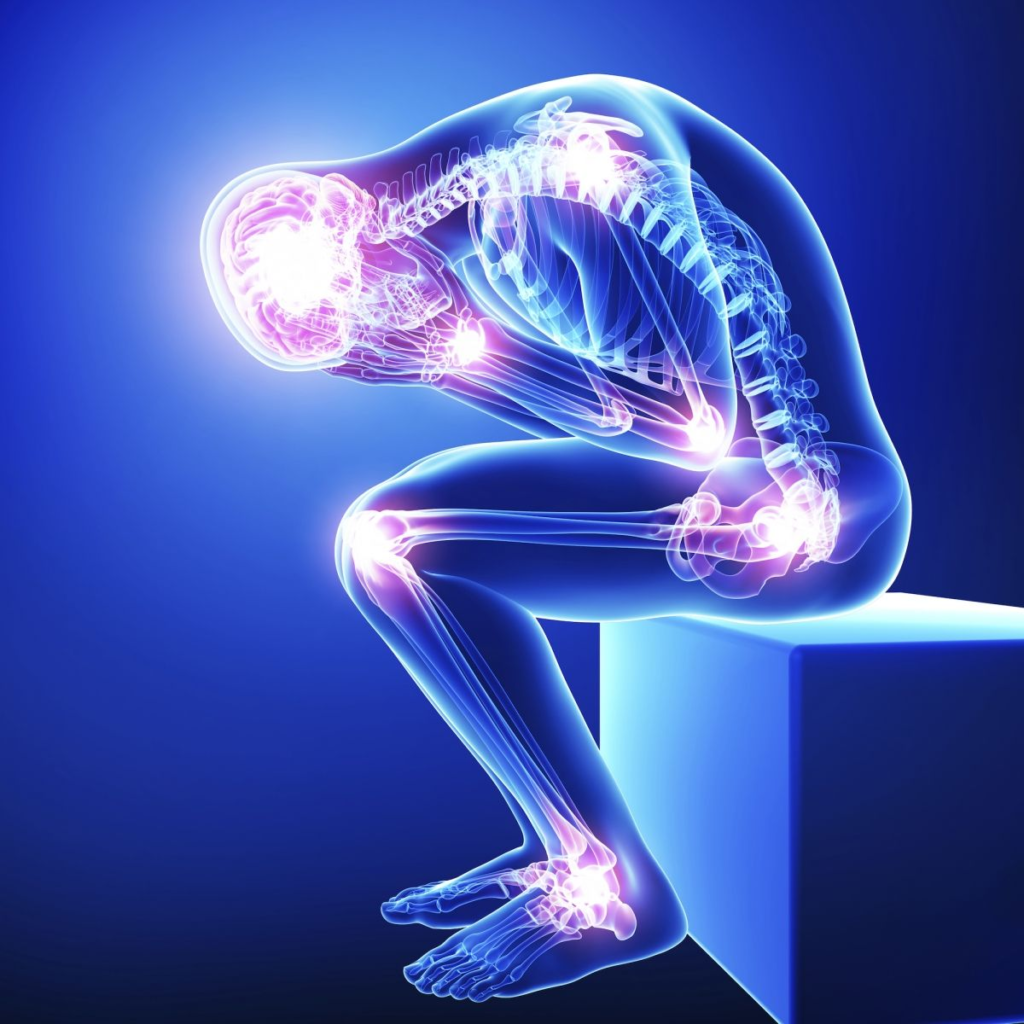The Science of Pain
What is pain?
Pain can be acute or chronic, mild or severe. Everybody knows what pain feels like but, what causes pain? Pain can be described as a survival mechanism whose purpose is to protect the body from harm. If you are feeling pain, your brain perceives a threat, sending a signal that something must be done.
One important thing to realize about pain is that pain is an output from the brain not an input from the body. When a body part is injured, nerve endings in that area send signals along the spinal cord to the brain. However, pain is not perceived until the brain interprets those signals and determines that pain signals would be helpful. This pain may prevent further damage and allow the body time to heal. Several different areas of the brain, including areas that govern memory and emotion, help filter the signals and produce a pain response. We all experience pain differently and many things factor into the severity of pain. These can include previous experiences, social/work environment, expectations of consequences, amongst many others. The professional violinist who fractures her hand will have a much different pain experience than the professional soccer player.
Pain does not necessarily equate to tissue damage

If you are in pain you may not necessarily be hurt and if you are injured you may not necessarily have pain. Several studies have shown that many people who are pain free have significant damage to their backs, knees or shoulders. One study showed that nearly 50% of people over 40 without back pain have a bulging disc in their spine! This statistic supports the idea that pain is not a direct correlation to the damage to our joints or muscles. When your body is working well, the pain should go away after the normal amount of healing time for that injury. Our bodies are very resilient after all!
Practice makes perfect – If you have had pain for more than a couple months then your body will be more efficient at producing that pain. In other words, the longer a certain pain persists, the easier it is to feel that pain. This process is called long term potentiation; which means that the more often the brain uses a neural pathway, the easier it is to activate that pathway again. Imagine you were walking a straight line in a tall grass field, the more times you walked that same path the easier it would be to get through the grass. This is the same process by which we learn new skills, such as playing the guitar. Nerve cells change their properties to be more responsive. So the more times we feel a certain pain, the less stimulus is needed to cause that pain. Our brains are learning the pain just as we learn how to perform any other complex movement.
How do I know if I’m safe to move?
When our pain system becomes hypersensitive and overprotective, it stops us from doing the movements and activities that are actually necessary for our bodies to recover. Movement is typically the first step to overcoming pain and it is almost always safe to move in some capacity. It is smart to consult with a health professional to rule out serious pathology and ensure it is safe to move. They can help you better understand your pain and educate you that things found on a scan (X-ray or MRI) are perfectly normal and often present in people without pain.
How do our chiropractors and physical therapists evaluate and treat pain? We obtain a thorough medical history from the patient and their current symptoms. Then we take the person through specific movements in an attempt to reproduce their specific pain or discomfort. One thing important to note is that we are always checking up and down the kinetic chain for a source other than the painful location. The pain could be coming directly from that location, referred from another body part, or a compensation of poor mechanics elsewhere. For example, low back pain could be coming from relative weakness and poor mechanics in the foot! As far as treatment goes, we use many different techniques to address pain and improve function. We use various modalities like heat, ice, and electrical stimulation to decrease pain. Our practitioners implement soft tissue mobilization, myofascial release, and joint mobilizations to decrease pain and increase range of motion. You can also refer back to our previous blog posts on these topics! Then we have our patients perform specific therapeutic exercise to increase their strength and optimize their movement.
Come in to our office in Smithtown or Selden for an evaluation for your aches and pains with our knowledgeable chiropractors and physical therapists today!










